Binding for front Pocket:
2 ¼” x 8” Strip of Fabric
Pocket Panel:
6.5” X 7” Quilted Panel
Body Panel:
17”x 7” Quilted Panel
Finished Size: 8”x6” Pouch
Specifically made for Kindle Paperwhite
With accommodations to fit a Kindle with a case.
1. Baste your two layers of fabric + batting together and quilt as desired to create one large quilted panel. 
2. Cut from your large panel of quilted fabric created in step one to one 17”x7” for the Body Panel and one 6.5”x7” for the Pocket panel. Set aside.  please note only body Panel is shown.
please note only body Panel is shown.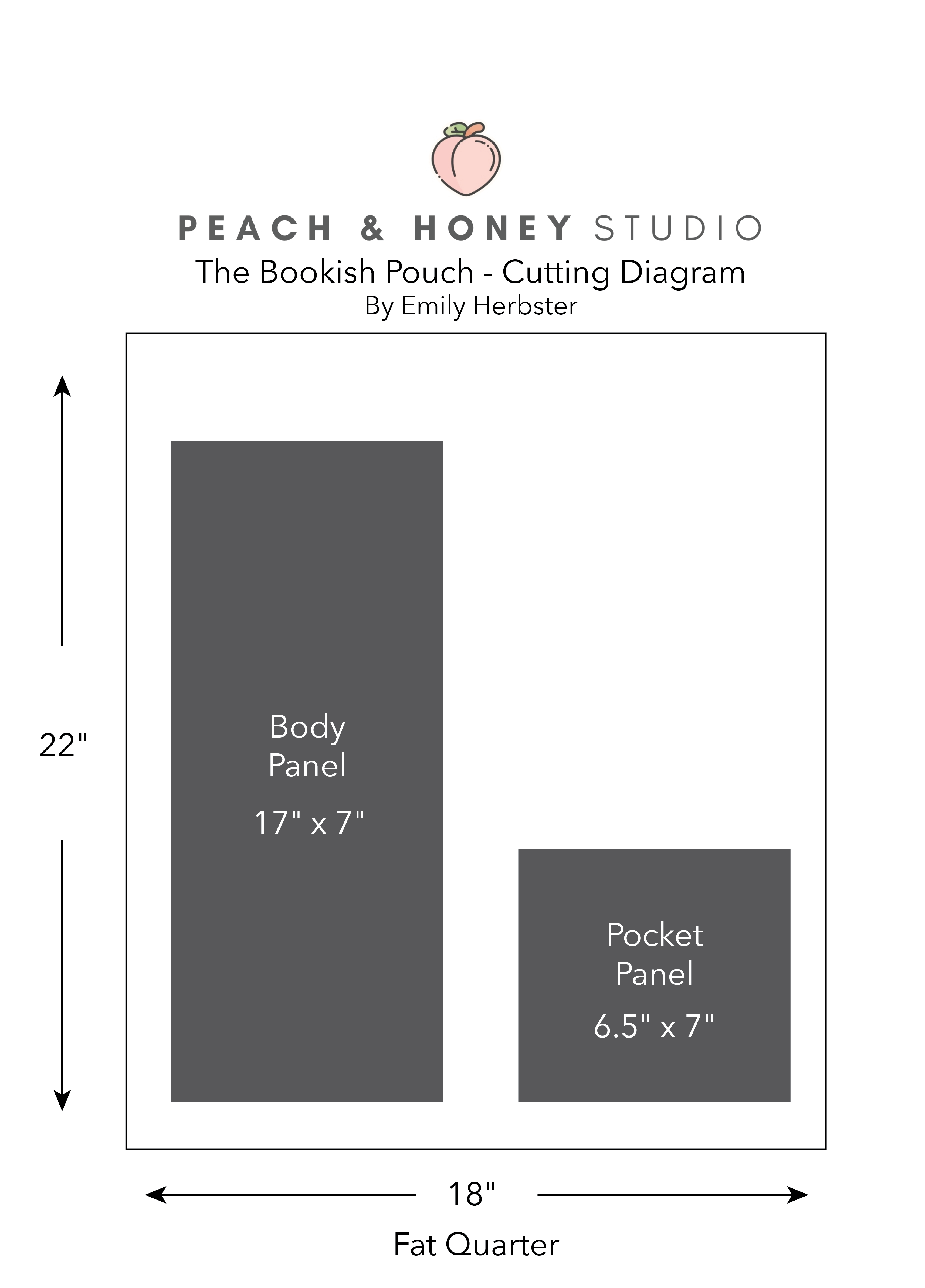
3. Taking your Body Panel, mark the top edge by dotting the left and right edge 1 ½” from the top as shown. This marking will help you fold over the top edge ensuring it’s as even as possible. 
4. Folder over the top edge you just marked pressing and clipping into place. Fold and press the closed bottom half as well. Your raw seams should be close to touching. 
5. Taking your Pocket panel, trim to create the slanted edge. Lay your Pocket panel out on your cutting mat lining it up with the 7 ½” mark on your mat lining up with the top of your panel. Set your ruler on top of your Pocket panel in preparation to trim. 
6. Your ruler should line up on your panel from your 7 ½” mark to 4 ½” mark as shown in the photo. Cut this line to create your slanted pocket panel edge with your rotary cutter. 
7. Take your binding and press it in half, wrong sides facing each other. Center your binding along the top raw edge and pin your binding to the inside of your Pocket Panel and head over to your sewing machine. You will have binding overage on each side. Attach your binding sewing with a ¼” seam allowance. 

8. Head over to your pressing area and flip up your binding and press. 
9. Fold binding over the raw edge to the front of your Pocket panel and press. Pin in place. 
10. Take your pocket panel over to your sewing machine and sew your binding neatly to the front. I prefer to do my binding method this way so I can control how the stitching looks. I increase my stitch length to 3.50 and sew close to the edge of the binding. 

11. Now that the Pocket panel is complete, we will move onto attaching the Pocket panel to the body panel. With your body panel folded, your bottom fold should be as even as possible after pressing in step 4. Press down with your ruler along the closed bottom edge marking a solid line. 

12. Aligning the right sides of your body panel and pocket panel, proceed to your sewing machine to affix the pocket to the body panel. With the raw edge of the pocket panel aligned with the marked line on the body panel, sew using a ¼ inch seam allowance to secure the panel. Ensure that your body panel is laid open flat to facilitate pocket attachment. The pocket panel should be affixed to the shorter edge of your body panel, as illustrated in photo 16. Disregard the bright green scrap of fabric; it was utilized as a leader piece to prevent any nesting issues at the beginning of this seam.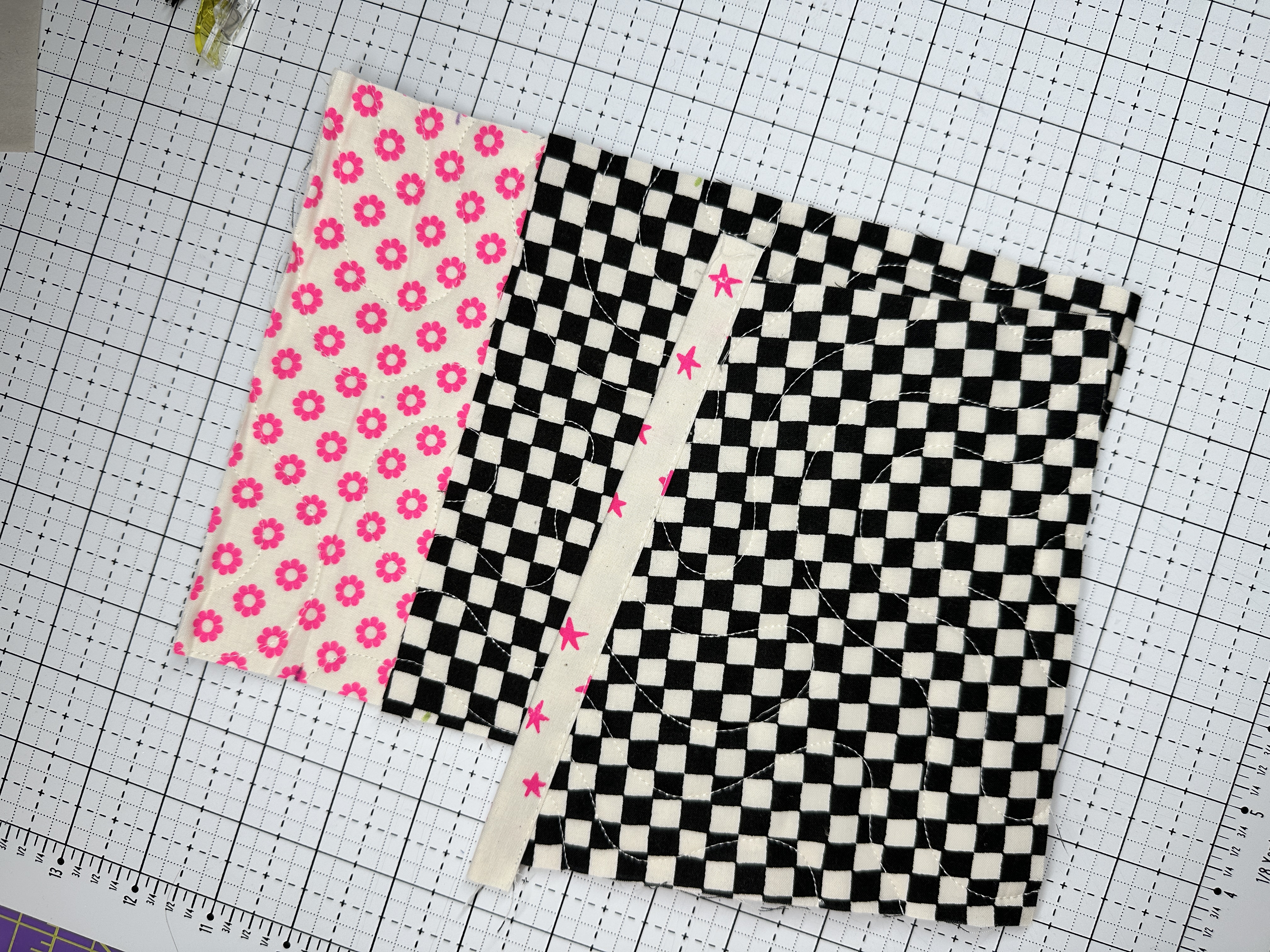


13. Take your panel over to your pressing station and press your pocket panel flipping it over to have all right sides facing upwards. Press this seam well to create as much flatness as possible. With your pocket panel attached to the body panel, it should look like photo 17. 
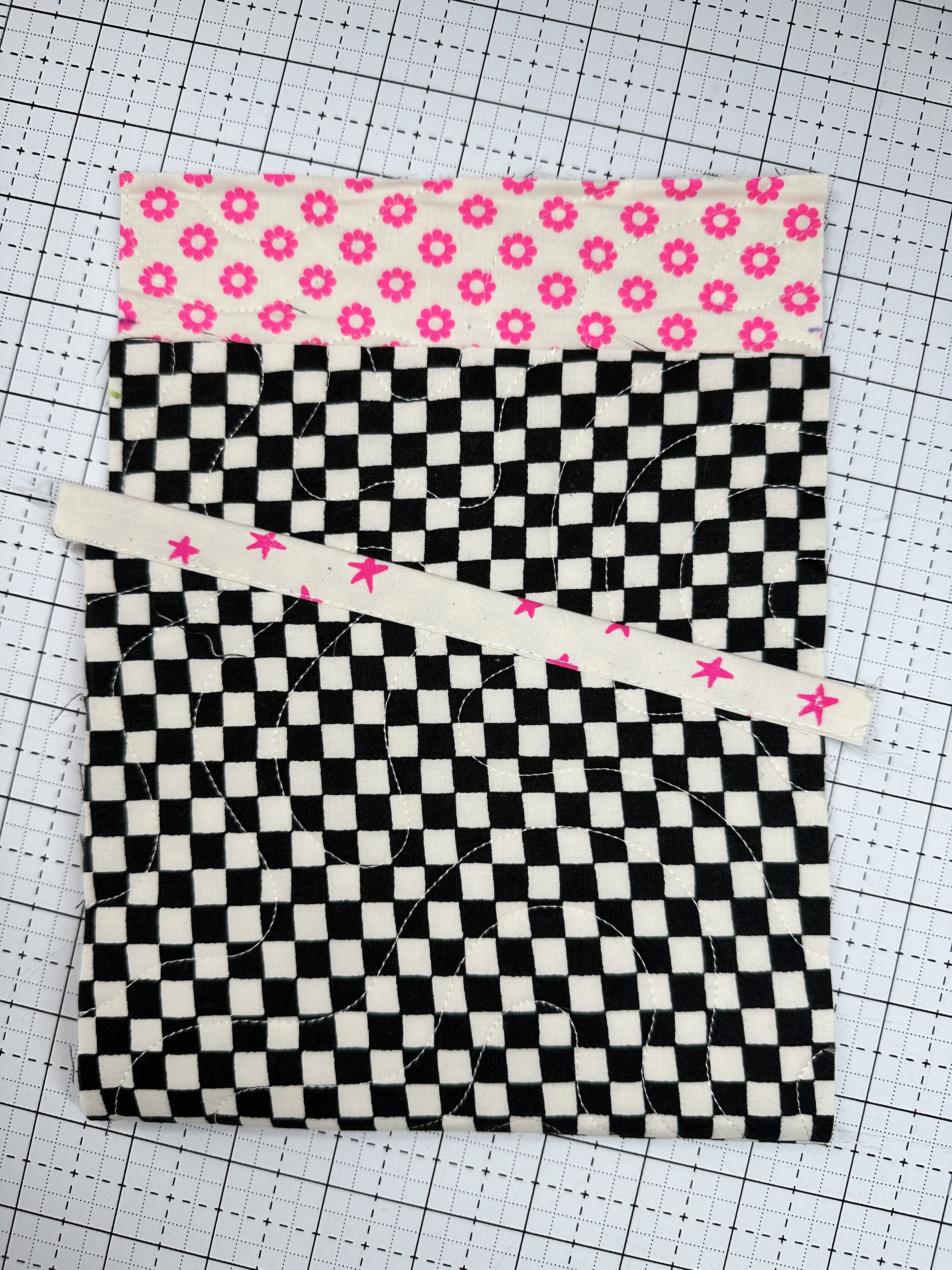
14. To start attaching your zipper to your panel, grab your clips and clip your zipper to the top raw edge of the body panel that your pocket is attached to. Flip back all layers leaving only the single raw edge of the body panel and the zipper. Sew as close to the zipper teeth as possible using your zipper foot. 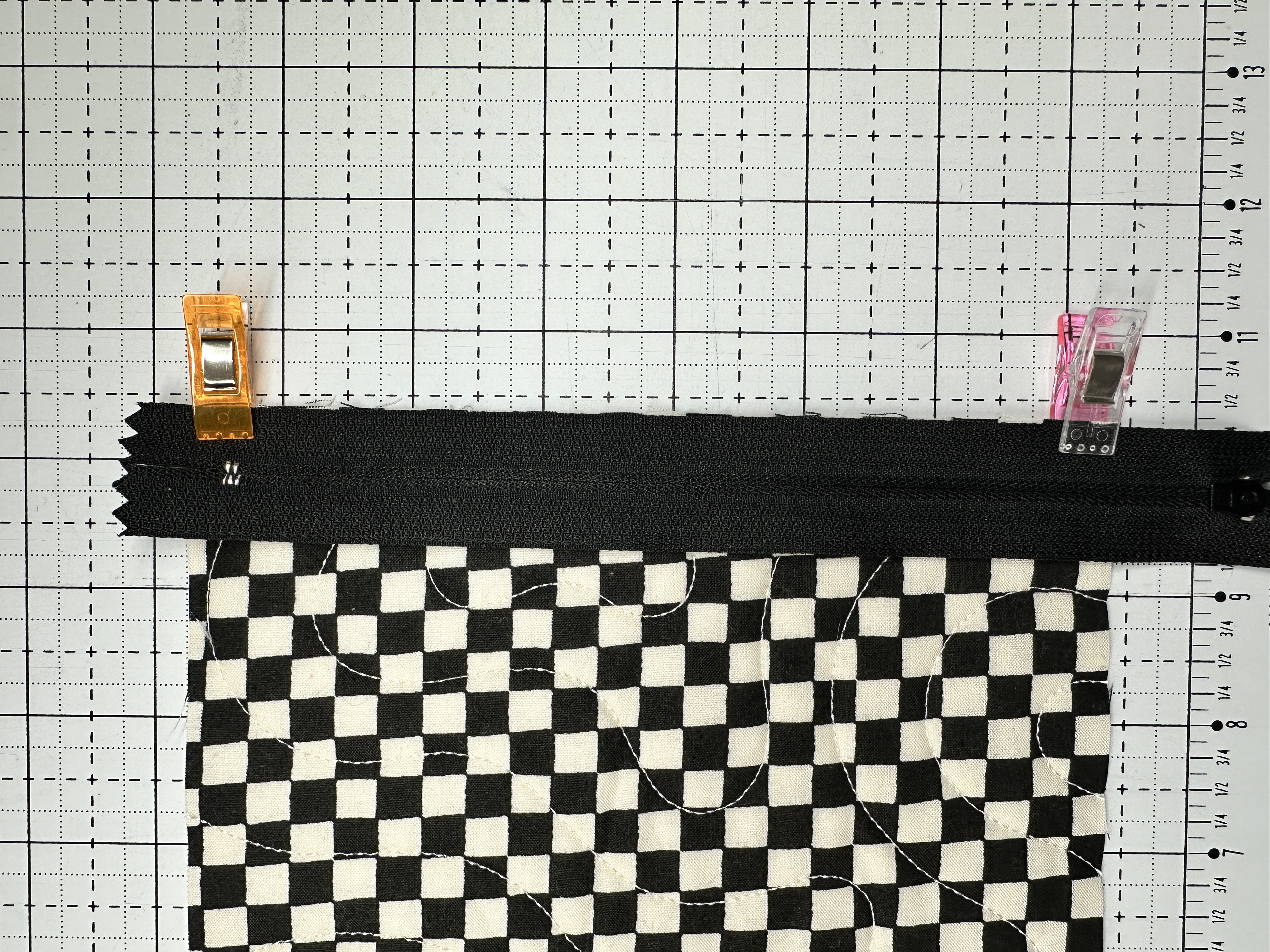

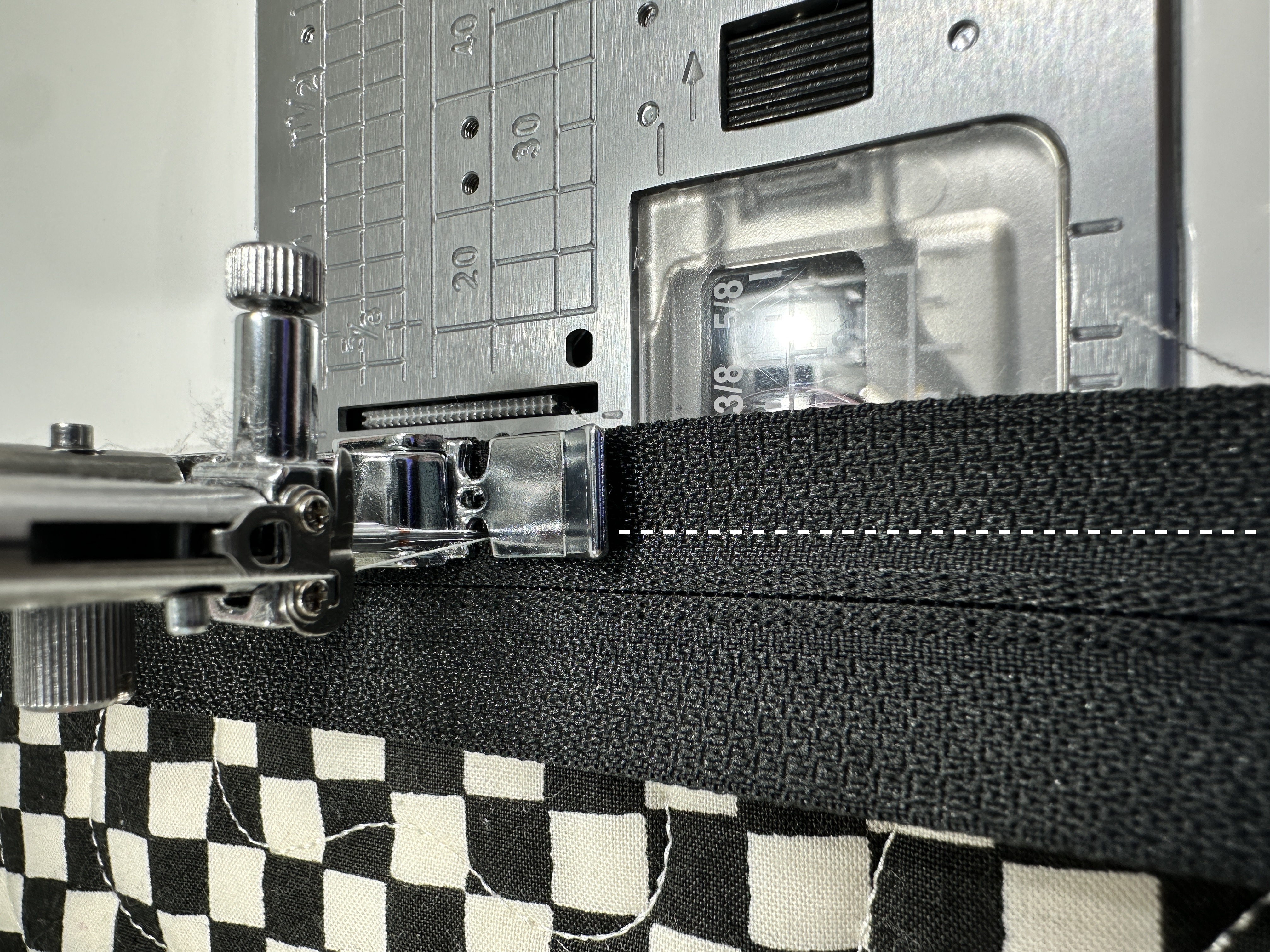
15. Press your zipper seam and top stitch. 
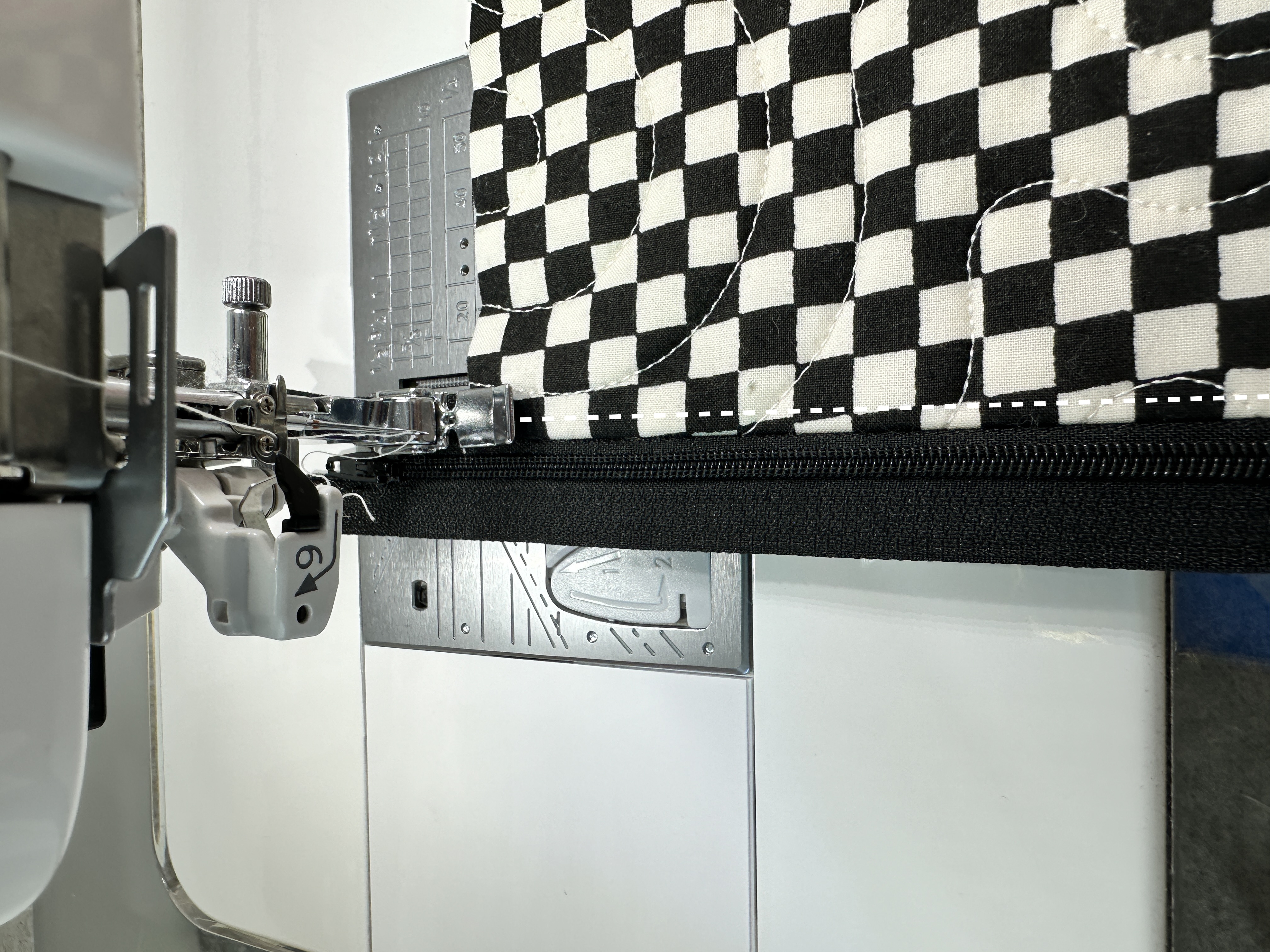
16. Flipping your pouch inside out, attach the zipper to the remaining raw edge using your zipper foot sewing as close to the edge of the zipper teeth as possible.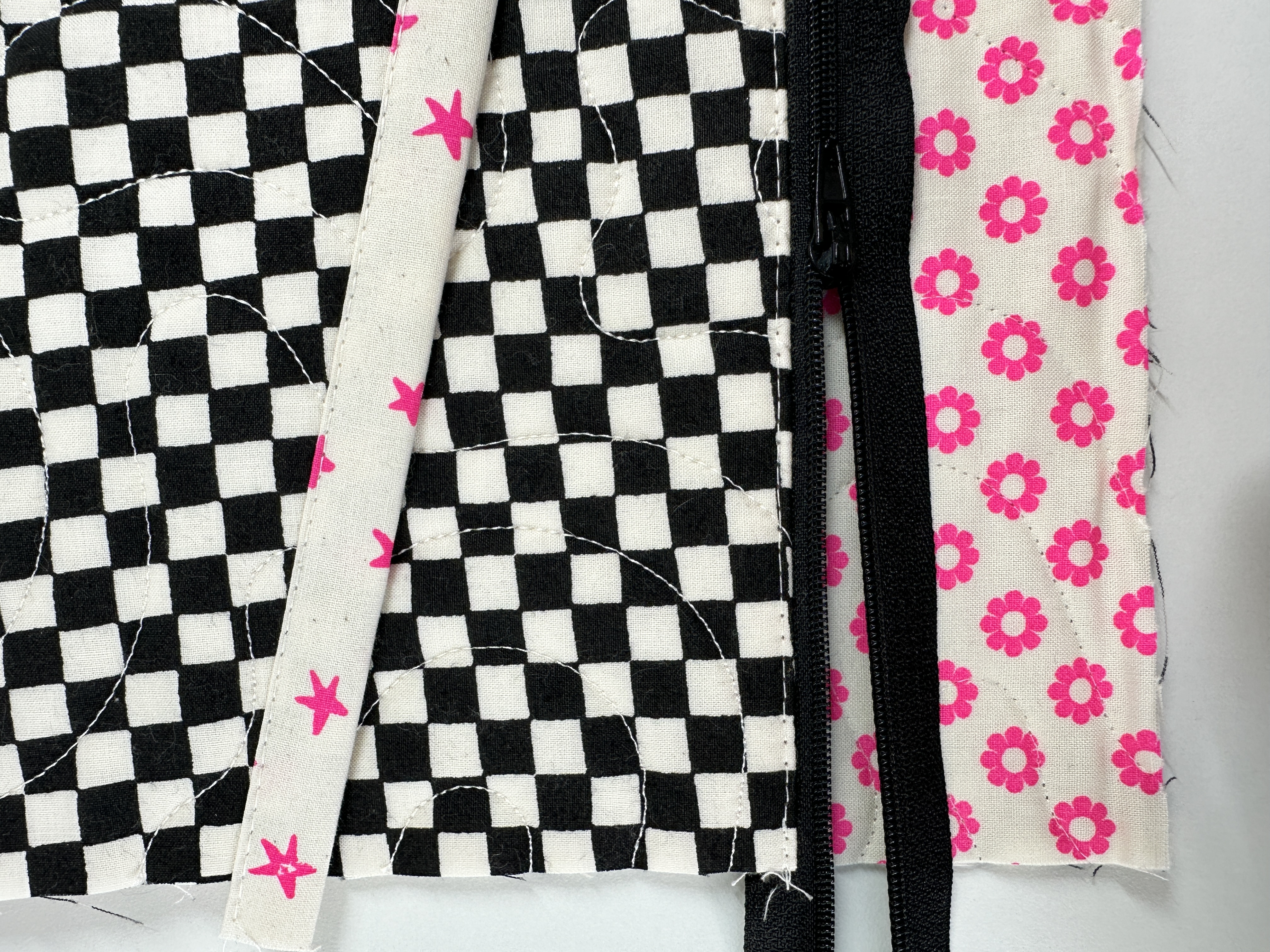


17. Flip pouch right side out to top stitch the latest zipper seam repeating the process in step 15. Press the zipper seam flat, open the zipper as much as you can and then top stitch ensuring you are only sewing on the single layer.. 
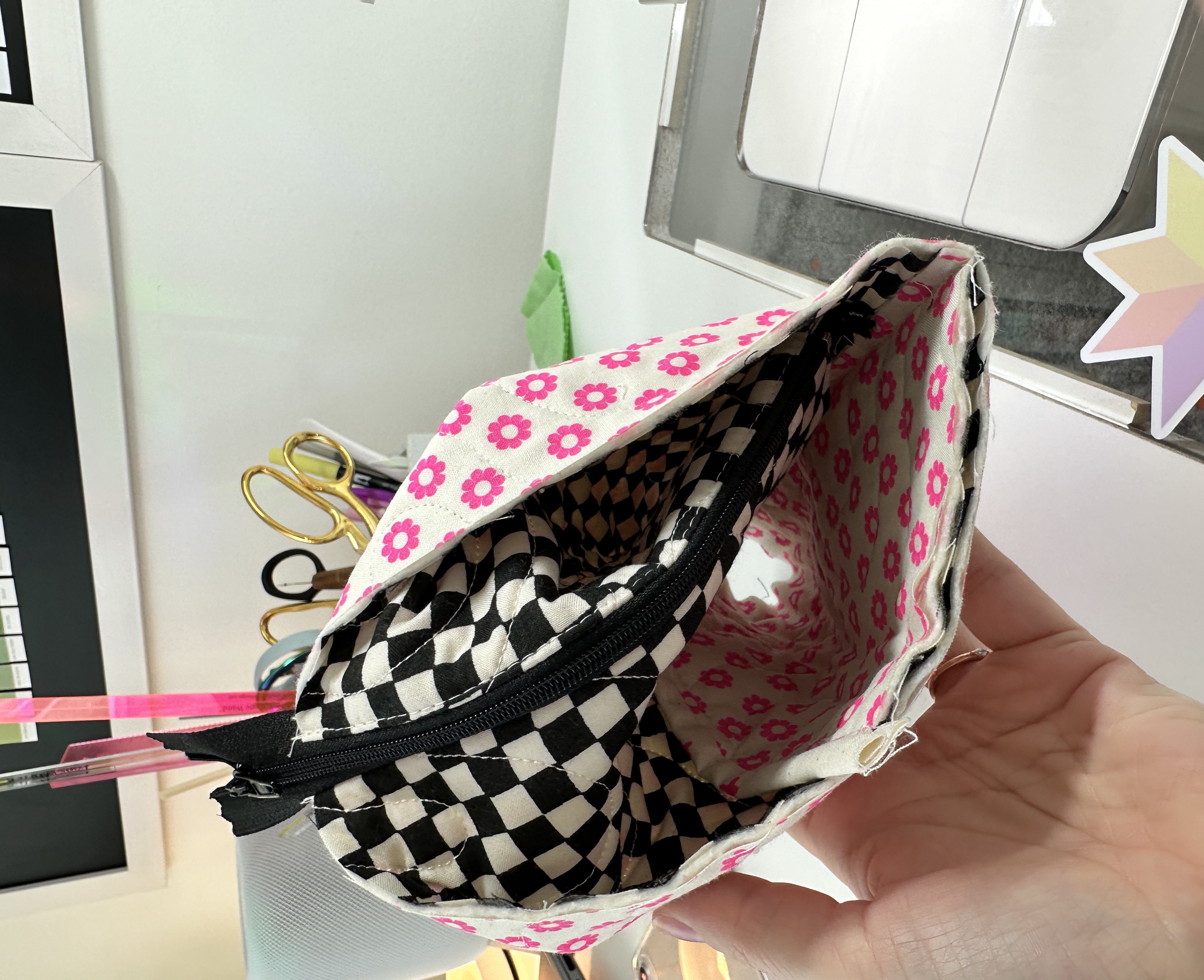
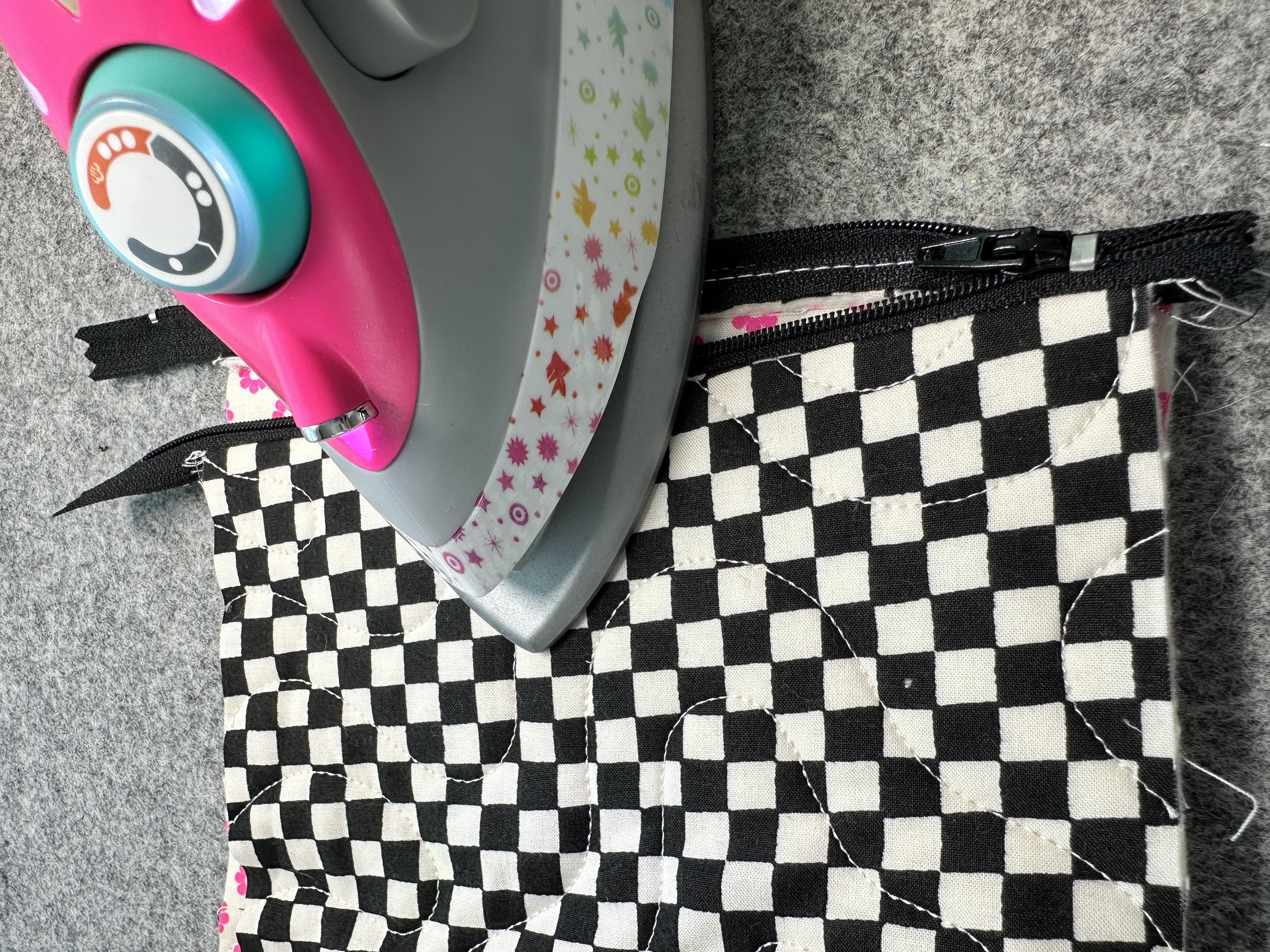

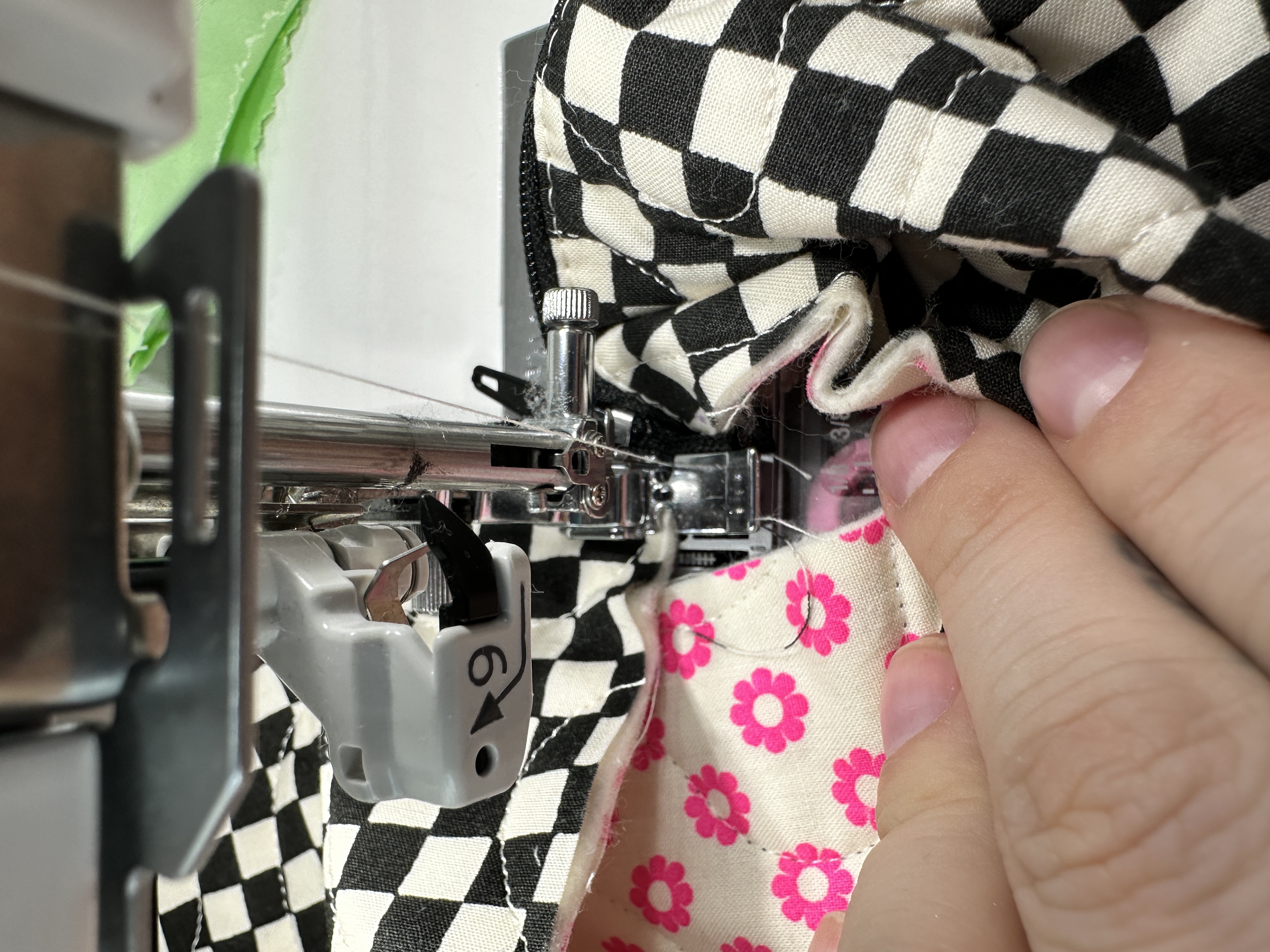
18. Keeping your pouch right side facing out, trim your zipper and binding edges. 
19. Flipping your pouch inside out, open your zipper as much as possible. Your zipper will need to be open as much as possible to make sure you can flip the pouch right side out at the end. Clip your edges ensuring the slanted pocket lays flat. Sew ¼” seam allowance down both sides backstitching at the start and end. 

20. Now with both edges sewn, closing your pouch entirely excluding the zipper you can flip your pouch right side out. You can use a point tuner if necessary to push out your corners.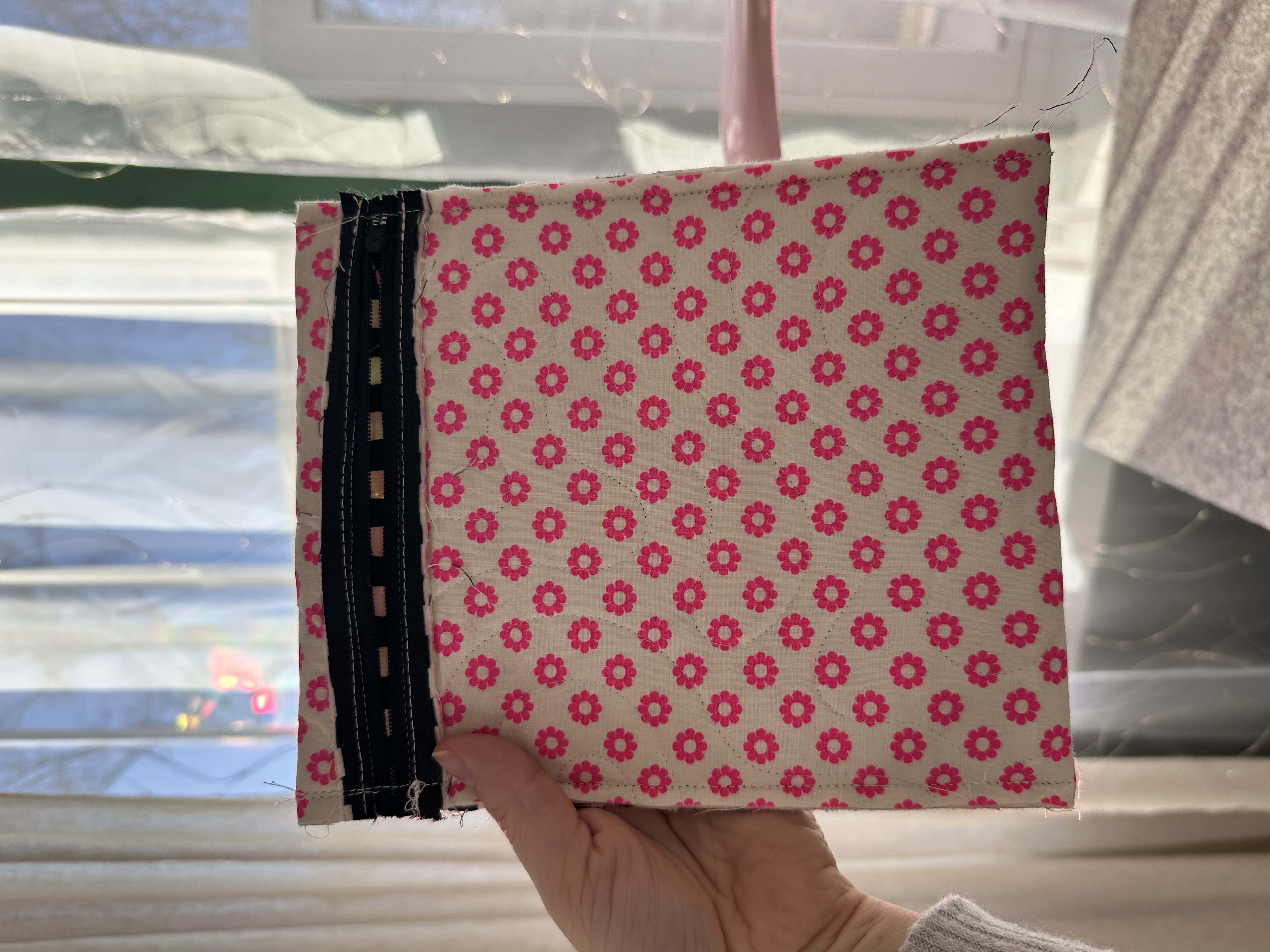
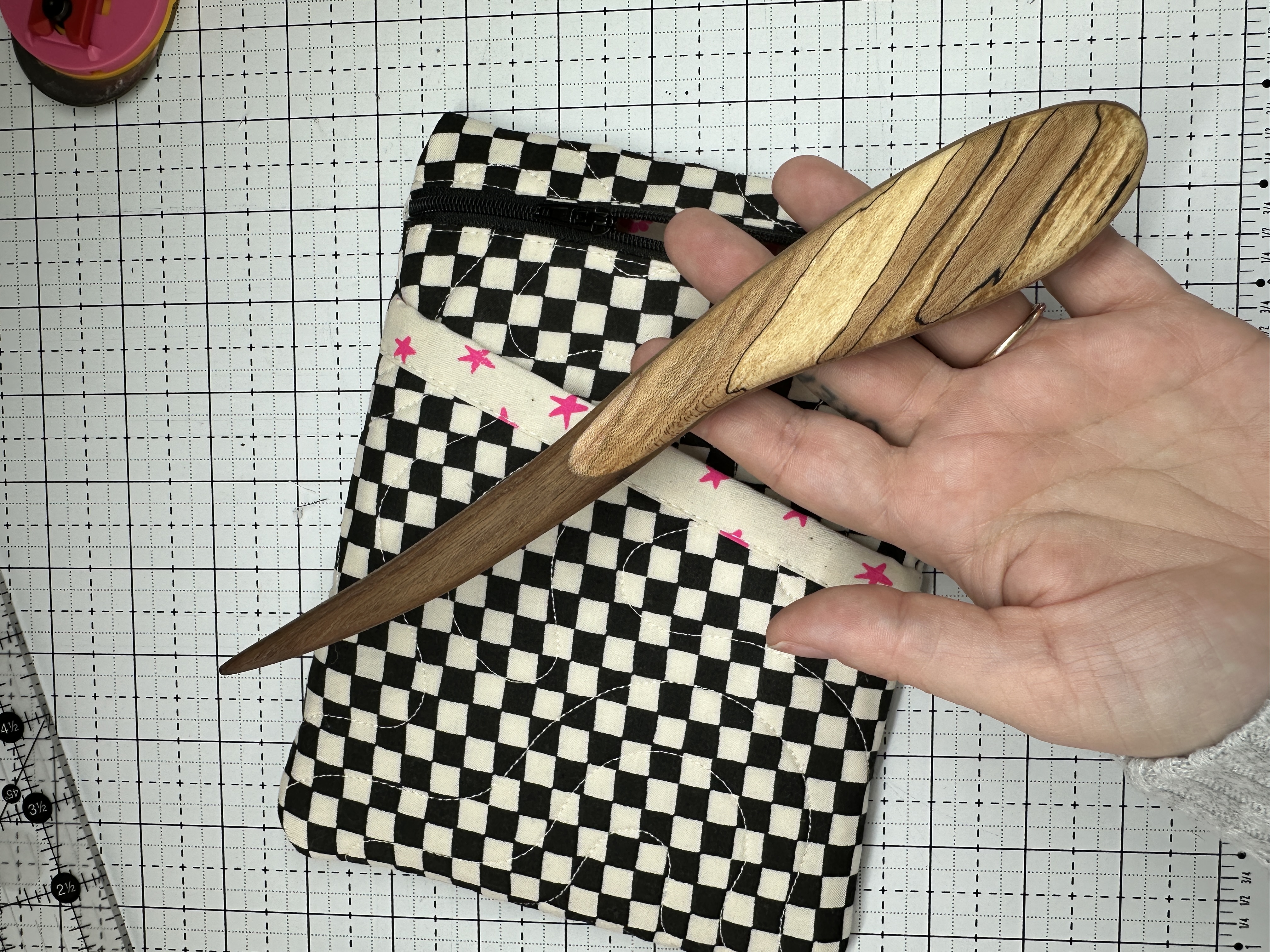
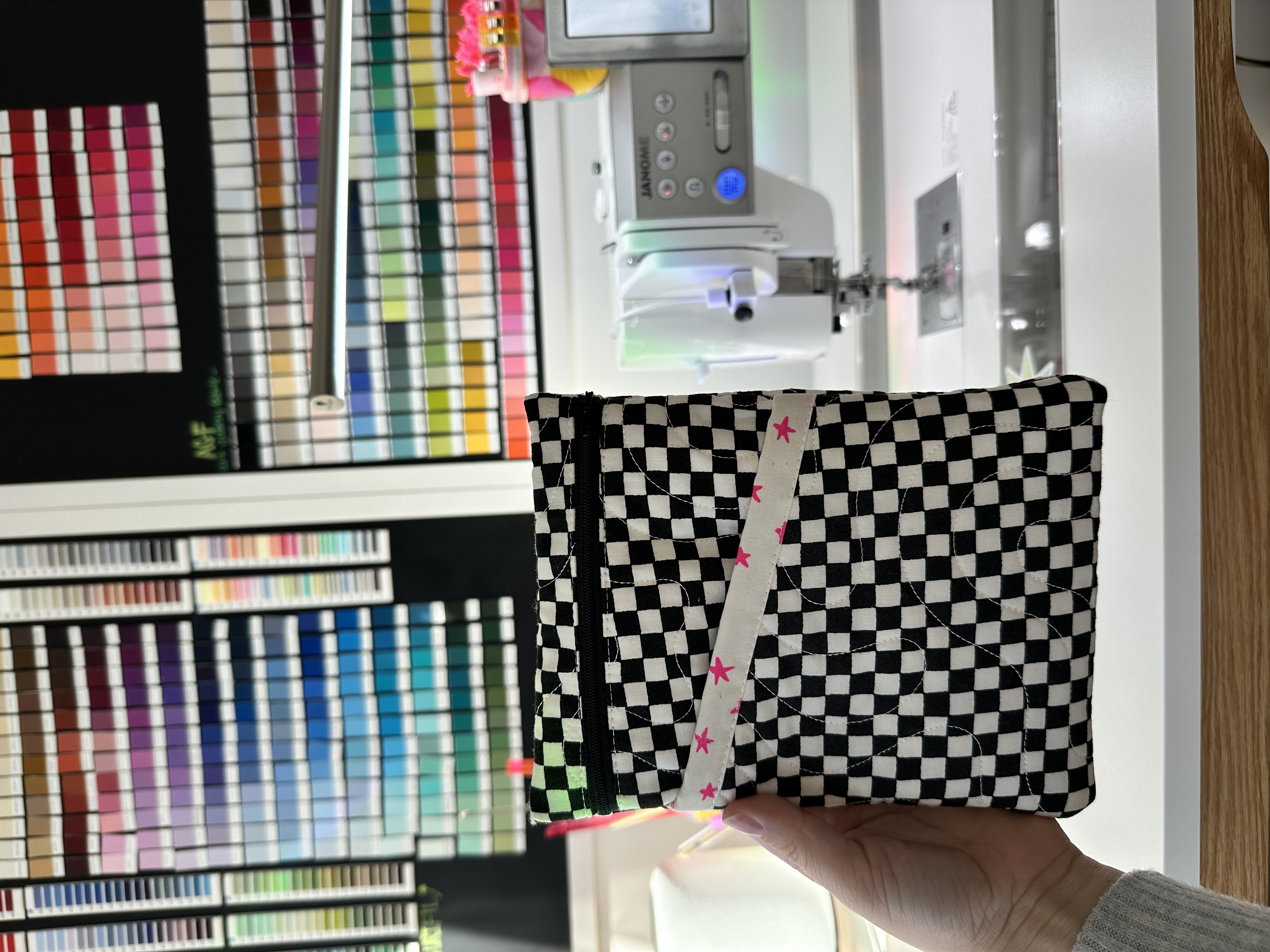
21. Enjoy reading on the go with your new e-reader Pouch!